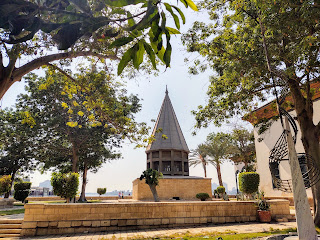 |
| The Roman Empire |
In the heart of this Muslim nation, where a minaret rises in the smallest of hamlets, and the call to prayer is heard every few hours; the magnificent ruins of the Roman Empire hark back to a different time. In the midst of green rolling hills, we can see the ancient columns, the arches, the mosaics, and the Latin inscriptions when this part of the globe was occupied by a different people. They came from Europe and began building their grand structures. They found olive trees and made oil, still used extensively in this region. They built Roman baths, the concept has lasted to this day in the use of
hammams all over Morocco.
The mosaic floors of many homes are still intact. Makes me wonder if the Islamic art of tile making and
zellige artistry was influenced by the Romans! While the Romans depicted gods, seasons, animals and patterns; Islamic tile art concentrates on geometric patterns. Islam forbids the depiction of people and animals, so artists have created the most intricate patterns with shape, size and colors.
 |
| Dionysus and the four seasons floor mosaic in Volubilis |
 |
| Tile patterns in the museum of the Hassan II mosque in Casablanca |
Volubilis is believed to have been the Roman capital of Mauritania in 3rd century BC. Rich in history, art, urban development and a synthesis of cultures; it is now a UNESCO World heritage site. It is truly amazing to take a walk down the street and imagine the chariots whizzing by! Fast foward your imagination, and there comes Islam from Arabia. Moulay Idris becomes the founder of the Idrisid dynasty and makes Volubilis his capital for a while. Keep fast forwarding as the capital melds one culture after another- Libyco-Berber and Mauritanian, Roman, Christian and Arabo-Islamic. Finally, it falls into ruins, but continues to maintain it's majesty and glory!






Comments
Post a Comment